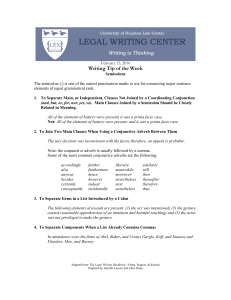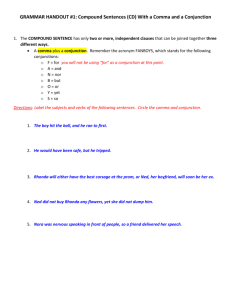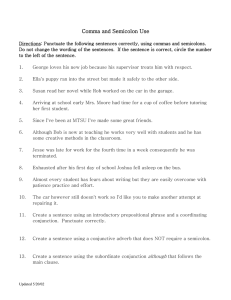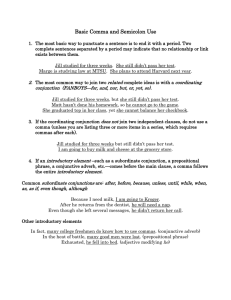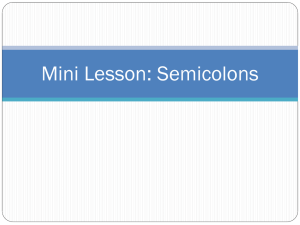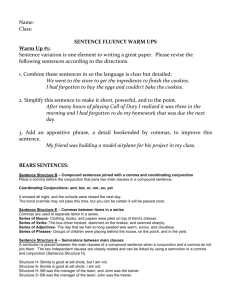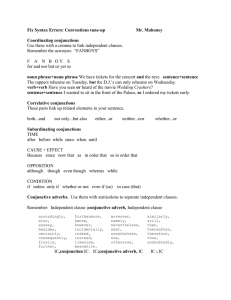Compound Sentences
advertisement
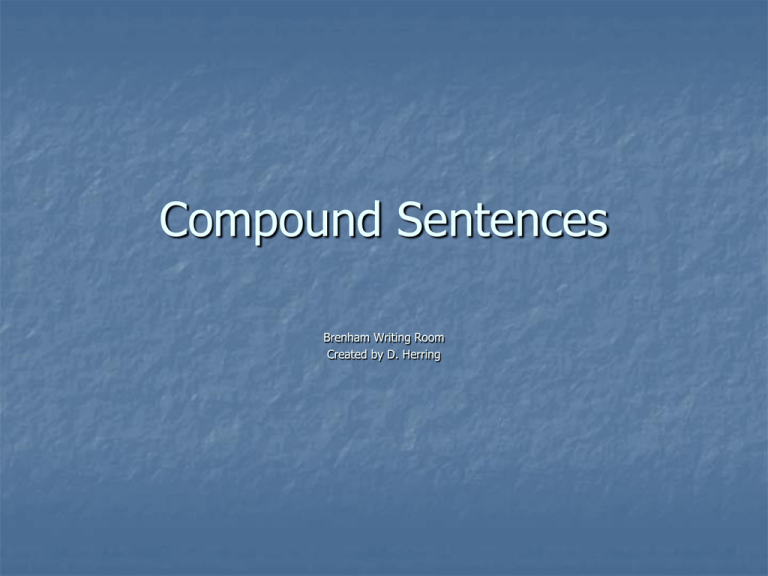
Compound Sentences Brenham Writing Room Created by D. Herring What is a Compound Sentence? A compound sentence contains two or more simple sentences. A sentence is also called an Independent Clause. A compound sentence joins two or more independent clauses. Each independent clause is of equal importance. Joining Complete Ideas Two complete, equal ideas (independent clauses) can be joined in several ways: Add a comma & coordinating conjunction Add a semicolon Add a semicolon and conjunctive adverb Using a Comma & Coordinating Conjunction to Join Ideas A coordinating conjunction joins two complete ideas and indicates the connection between them. Coordinating Conjunctions are also known as FANBOYS (for, and, nor, but, or, yet, so). Use a comma & coordinating conjunction to join two independent clauses. He plays the guitar, and he also sings. This class is difficult, but it is important for my future. Using a Semicolon to Join Ideas A semicolon can be used to join two independent clauses. If you join two independent clauses using a semicolon, they must Be of equal importance Be closely related Actually be independent clauses (complete sentences) Using Semicolons continued. . . Related: I was an excellent high school student; I hope to also do well in college. Unrelated: In high school, I was a cheerleader; I hope to do well in college. Two Independent Clauses: We went to class; then we all went to the movies. NOT: We went to class; then to the movies. Use a Semicolon and Conjunctive Adverb to Join Ideas After the semicolon, use a conjunctive adverb to indicate relationship. A conjunctive adverb is a transitional word that indicates relationship and is used to join two closelyrelated, equal thoughts. Conjunctive adverbs are also known as Transitional expressions See list on pg. 261 in Little, Brown Handbook Add a semicolon and conjunctive adverb to join ideas She passed the final exam; however, she didn’t pass the course. I studied for several hours; therefore, I passed the test. Punctuation with Coordination When joining two sentences (complete thoughts) with a coordinating conjunction, remember to use a comma. We went to the mall, and then we went to eat. When joining two sentences with a conjunctive adverb, use a semicolon between the sentences and follow the conjunctive adverb with a comma. He didn’t pass the test; however, he passed the class.
